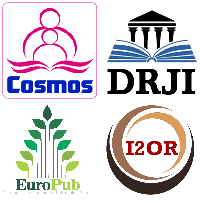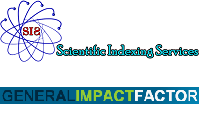The Transformative Power of Love in Childhood Development: A Psychological and Neuroscientific Perspective
Abstract
Love is a fundamental force that shapes human development from conception through adulthood. This review aims to explore the transformative impact of maternal love on a child’s emotional, cognitive, and social growth across prenatal, infancy, childhood, and adolescent stages. Grounded in Attachment Theory and Self-Determination Theory, it focuses how love fosters secure attachment, emotional regulation, and intrinsic motivation, leading to lifelong psychological flourishing. Also, it employs a narrative review for the data collection and thematic analysis was used to identify key themes with qualitative reflections from adults on their childhood experiences of maternal love. Key findings suggest that maternal love during pregnancy reduces prenatal stress and enhances neural development. Secure attachment in infancy fosters emotional regulation and resilience, while nurturing love in childhood strengthens cognitive abilities, emotional intelligence, and social competence. During adolescence, consistent parental love contributes to identity formation, self-esteem, and well-being. Furthermore, long-term effects of early love include greater autonomy, purpose, and relationship satisfaction in adulthood. These findings underscore that maternal love is a catalyst for psychological safety, self-worth, and happiness, reinforcing its transformative role in human development. The findings contribute to positive psychology interventions by emphasizing the necessity of early emotional nurturance. Future research should explore cross-cultural perspectives and the impact of maternal love on stress resilience, leadership development, and overall well-being in adulthood.
References
Deci, E. L., & Ryan, R. M. (2000). The “what” and “why” of goal pursuits: Human needs and the self determination of behavior. Psychological Inquiry, 11(4), 227–268. https://doi.org/10.1207/S15327965PLI1104_01
Feldman, R. (2012). Oxytocin and social affiliation in humans. Hormones and Behavior, 61(3), 380–391. https://doi.org/10.1016/j.yhbeh.2012.01.008
Gunnar, M. R., & Quevedo, K. (2007). The neurobiology of stress and development. Annual Review of Psychology, 58, 145–173. https://doi.org/10.1146/annurev.psych.58.110405.085605
Luby, J. L., Belden, A., Botteron, K., Marrus, N., Harms, M. P., Babb, C., ... & Barch, D. M. (2013). The effects of poverty on childhood brain development: The mediating effect of caregiving and stressful life events. JAMA Pediatrics, 167(12), 1135–1142. https://doi.org/10.1001/jamapediatrics.2013.3139
Meaney, M. J. (2010). Epigenetics and the biological definition of gene × environment interactions. Child Development, 81(1), 41–79. https://doi.org/10.1111/j.1467-8624.2009.01381.x
Narvaez, D. (2014). Neurobiology and the development of human morality: Evolution, culture, and wisdom. W. W. Norton & Company.
Schore, A. N. (2001). Effects of a secure attachment relationship on right brain development, affect regulation, and infant mental health. Infant Mental Health Journal, 22(1-2), 7–66. https://doi.org/10.1002/1097-0355(200101/04)22:1<7::AID-IMHJ2>3.0.CO;2-N
Sroufe, L. A., Egeland, B., Carlson, E., & Collins, W. A. (2005). The development of the person: The Minnesota Study of Risk and Adaptation from Birth to Adulthood. Guilford Press.
Thompson, R. A. (2016). Early attachment and later development: Familiar questions, new answers. In J. Cassidy & P. R. Shaver (Eds.), Handbook of attachment: Theory, research, and clinical applications (3rd ed., pp. 330–348). Guilford Press.
Vygotsky, L. S. (1978). Mind in society: The development of higher psychological processes. Harvard University Press.
Zeanah, C. H., & Gleason, M. M. (2015). Attachment disorders in early childhood. In M. T. Toth & D. Cicchetti (Eds.), Developmental psychopathology (3rd ed., Vol. 4, pp. 411–436). Wiley. https://doi.org/10.1002/9781119125556.devpsy412
Copyright (c) 2025 N. Hettige, M. P. Dissanayake

This work is licensed under a Creative Commons Attribution 4.0 International License.


 ISSN
ISSN 











